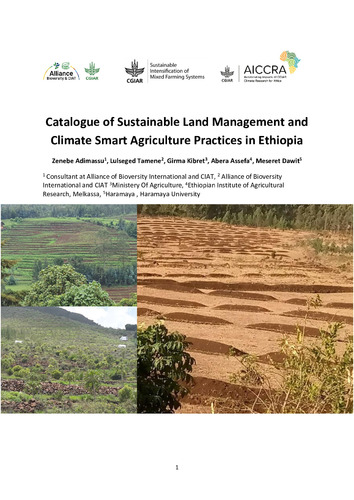Catalogue of sustainable land management and climate smart agriculture practices in Ethiopia
Massive SLM/CSA practices have been implemented for the last four decades in various agro-ecologies
of Ethiopia. Nevertheless, these practices were not well catalogued in illustrative (pictorial)
representation. Cataloguing Sustainable Land management (SLM) and Climate Smart Agriculture (CSA)
practices, technologies and approaches are important in helping us to understand what we have, where
they are located and what stories they tell. The first attempt is thus being made to catalogue and
document the major SLM and CSA practices, technologies and approaches in Ethiopia with illustration
of the practices as much as possible. The catalogue can be considered a live document which is open
for revision based on the availability of new and additional information. In addition, the content and
style of the catalogue can be improved with input from SLM and CSA experts in the country and
beyond.
The catalogue is developed by experts drawn from various institutions including The Bioversity
International and CIAT (ABC), the Ministry of Agriculture (MoA) and the Ethiopian Institute of
Agricultural Research (EIAR). Information was obtained from individual researchers who have
amassed huge experience over long period of time. Photo galleries were acquired from different
projects such as SLMP, RLLP/CSA and PSNP through project leaders and focal persons in various
regions. Once the draft was prepared by these experts, the catalogue was verified and validated by
experts from regions including Amhara, Benishangul Gumuz, Gambella, Oromia, Sidama, SNNP and
Southwestern Ethiopia. The validation was done during the CSA training whorkshop which was held
in November 20 to 25, 2022 at Adama, Ethiopia.
The catalogue provides a short description of practices including issue to be addressed, scale
of implementation, agro-ecological zones, suitable land use and limitations. Most of the illustrations
used were collated from successful cases to create awareness, facilitate adoption and support the
notion ‘seeing believing’. Generally, the catalogue contained about 70 practices under four categories;
physical, biological, agronomic, water management and mixed (other) practices. The catalogue can
serve stakeholders including researchers, development agencies and academia test, validate,
implement and adopt in their localities.

